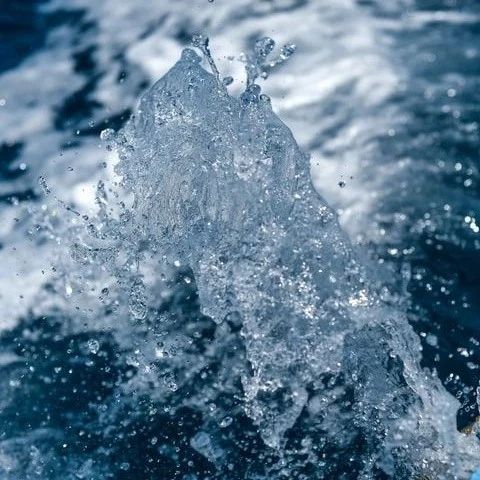
Click the blue text above to follow us

Traditional Chinese Medicine Book Club Issue 2901
One issue daily, accompanying the growth of TCM practitioners
Introduction: “Damp-Heat” is the most common and difficult-to-treat pathogenic combination in TCM clinical practice. Since “Damp” is inherently a Yin pathogen and “Heat” is a Yang pathogen, when water meets fire, should we eliminate dampness or clear heat? How should we grasp this? Why can the Er Miao San (Two Marvels Powder), with just two herbs, effectively address this issue? Let’s see how Teacher Wu Ji explains it! (Editor/Xiao Meng)

What is Damp-Heat? What should we do?Author/Wang Xu ZhiDamp-Heat pathogens can develop within the body and typically do not appear suddenly; rather, they accumulate over a considerable period.To eliminate these pathogens is not a task that can be accomplished in a few days; it often requires a longer duration, such as one to two months.In more complex cases, one may struggle with Damp-Heat pathogens throughout their life.Once the body’s condition deteriorates, Damp-Heat emerges. So, why is this internally generated Damp-Heat so difficult to eliminate?
01
Why is Damp-Heat so difficult to treat?The reasons can be understood from the perspectives of pathogenic and righteous Qi. Firstly, the nature of Damp and Heat as pathogens is opposite. One is water, and the other is fire.Now, with water and fire mixed together, water cannot extinguish fire, nor can fire dry up water; they are stuck together. To clear heat, one must use cold, which inevitably exacerbates dampness; to eliminate dampness, warmth is needed, which will promote heat pathogens, making treatment difficult.Additionally, Damp-Heat pathogens have a notable characteristic: they are sticky; they are even stickier than pure dampness.For example, if pure dampness is like a bowl of sugar water, it feels slightly sticky. However, if you add fire beneath the sugar water, it quickly turns into syrup, becoming very sticky. Internally generated Damp-Heat pathogens have a similar syrup-like quality. They are very sticky and contradictory, making treatment more challenging.From the perspective of righteous Qi, we find that Damp-Heat pathogens can persist long-term when the body’s righteous Qi is usually insufficient.When heat pathogens are present, Yin essence is often deficient; when damp pathogens are present, Yang Qi is generally inadequate.If a person has abundant Yin essence, heat pathogens are usually not common; even if there is heat, it can be quickly subdued. Similarly, if a person has sufficient Yang Qi, damp pathogens tend to not linger.In other words, if a person has long-term Damp-Heat pathogens, their Yin and Yang essence is typically insufficient.Moreover, once Damp-Heat pathogens take shape, heat pathogens will continuously deplete Yin essence, and damp pathogens will consume Yang Qi, further exhausting righteous Qi. To expel pathogens, we ultimately rely on righteous Qi. Now that righteous Qi is deficient, expelling Damp-Heat pathogens becomes even more difficult.
02
How does Er Miao San eliminate Damp-Heat?Now that we understand the characteristics of internally generated Damp-Heat pathogens and why they are difficult to eliminate, how does Er Miao San address this?As mentioned earlier, Er Miao consists of two bitter herbs: the warm bitter Cang Zhu (Atractylodes) and the cold bitter Huang Bai (Phellodendron). The primary function of bitterness is to drain, acting as a form of impact on the body.The cold bitterness has a stronger impact, directly targeting the heat pathogens within the body.For instance, Huang Bai primarily targets the fire in the kidneys. This heat pathogen in the kidneys often manifests in the perineal area, such as in male and female reproductive issues, as well as urinary problems. When damp and heat combine to form a pathogenic entity, the affected areas are often in the perineal and gluteal regions.Common symptoms include painful and burning urination, sticky and burning stools, and in females, yellow, copious, thick, and foul-smelling vaginal discharge, usually caused by Damp-Heat pathogens. Huang Bai, through its cold bitter properties, can specifically target and eliminate Damp-Heat pathogens in these areas.In treating Damp-Heat, Huang Bai not only clears heat and dries dampness but also has an implicit function of protecting Yin essence. As mentioned earlier, heat pathogens deplete Yin essence. By clearing away heat pathogens, the Yin essence in the kidneys can be preserved. In TCM, the bitter flavor is said to have a strengthening effect, meaning that through draining fire, it can make Yin essence more robust.However, while cold bitter herbs can strengthen Yin essence, their attacking power is too strong, which can severely impact Yang Qi.In contrast, the warm bitter Cang Zhu, while also exerting some impact on the body, actually helps to mobilize Qi and eliminate dampness.Thus, under the shadow cast by Huang Bai’s cold bitterness, Cang Zhu’s warm and drying properties can help to alleviate coldness and protect Yang Qi.Simultaneously, Cang Zhu’s warm and drying nature also treats dampness and Qi stagnation. Therefore, with Huang Bai as the monarch and Cang Zhu as the minister, Er Miao San becomes the foundational formula for treating internally generated Damp-Heat.
Recommended Reading
-
Learn how to treat dampness from a veteran TCM practitioner with over 40 years of experience
-
Remember the “medication routine” for treating dampness in the San Jiao with these 9 characters
-
Spleen deficiency is divided into 3 degrees; Dong Yuan has three formulas
Copyright Statement
-
This article is reproduced from the WeChat public account “Tian Xia Wu Ji: What is Damp-Heat? What Should We Do?”, Author: Wang Xu Zhi, Editor/Xiao Meng.The TCM Book Club has obtained the appropriate authorization. Please retain the copyright statement when reproducing.
-
This public account shares articles and videos for learning and exchange purposes only. Non-TCM professionals should not attempt to self-medicate.
Submission Email [email protected]


Click to view more of Teacher Wang Xu Zhi’s wonderful articles!


